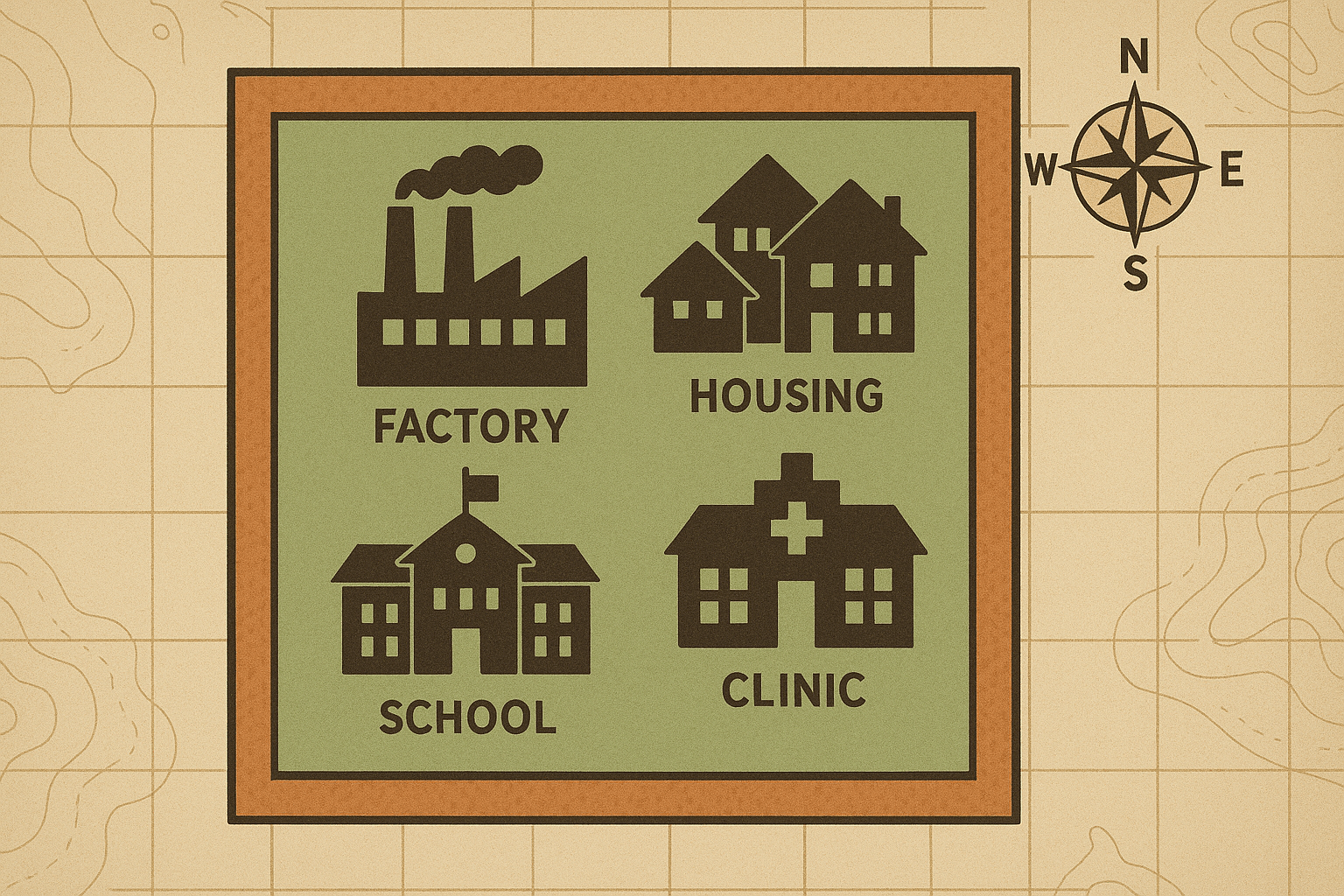Walk through a modern Chinese metropolis like Beijing or Shanghai today, and you’re navigating a landscape of shimmering skyscrapers, sprawling ring roads, and bustling commercial districts. It’s a geography familiar to any global city dweller. Yet, hidden in plain sight, are the remnants of a radically different urban model—a world built not of open streets and specialized zones, but of walls and self-contained cells. This was the world of the danwei (单位), the work-unit compound that was the fundamental building block of urban life in Maoist China.
From Imperial Walls to Socialist Cells
The concept of enclosing communities is deeply embedded in Chinese urban history. Imperial capitals like Chang’an (modern Xi’an) were organized into walled wards called fang (坊), and the traditional Beijing courtyard home, the siheyuan (四合院), famously turned its back to the street, focusing life inward. The Communist Party, after taking power in 1949, adapted this principle of enclosure for a new socialist purpose.
As China embarked on a monumental push for industrialization, millions flocked from the countryside to the cities. The Party needed a mechanism to organize this new urban proletariat, manage resources, and ensure ideological conformity. The danwei was the answer. State-owned enterprises—factories, government ministries, universities, hospitals—became the nuclei around which entire communities were built. The danwei wasn’t just a place of employment; it was a comprehensive system of social and spatial organization.
The Geography of a Danwei: A City in Miniature
At its heart, the danwei was a distinct geographical entity, a self-sufficient island within the city. Its most defining physical feature was the wall. Topped with barbed wire or broken glass, and punctuated by a guarded gate, the wall was more than a boundary; it was a membrane controlling the flow of people and resources. To enter a danwei you didn’t belong to, you needed a letter of introduction. Your entire existence was mapped onto this enclosed space.
Inside the walls, the landscape was highly functional and standardized, often following a Soviet-inspired template. The layout typically included:
- Production Areas: The factory floor, the furnace, or the ministry office building, forming the economic and symbolic heart of the compound.
- Residential Blocks: Monotonous rows of concrete, walk-up apartment buildings, often poorly constructed, which housed the workers and their families. Housing was not chosen; it was assigned by the unit.
- Social Services: The danwei provided for its members from cradle to grave. This meant the compound contained its own canteens, clinics, bathhouses, post offices, barbershops, and stores for rationed goods.
- Education and Recreation: Larger work-units would have their own kindergartens, primary schools, and even middle schools. A basketball court, a small park, and a cinema or auditorium for movies and political meetings completed the miniature city.
The Cellular City: A New Urban Fabric
When you zoom out from a single compound, you can see how the danwei system fundamentally reshaped the geography of the entire city. Instead of developing a central business district (CBD) and distinct residential suburbs connected by commercial corridors, Chinese cities became a patchwork of these cellular units. The urban form was a mosaic of thousands of walled, inward-looking danwei, separated from each other by arterial roads or agricultural plots left in between.
This cellular structure had profound geographical consequences. Public space was minimized. There was little incentive to develop vibrant street life, public parks, or city-wide commercial centers because life was lived *within* the unit, not *between* them. Urban planning focused on the internal logic of each cell rather than the integrated functioning of the metropolis. Getting from one side of the city to the other often meant navigating a labyrinth of compound walls.
Human Geography: Life Within the Walls
The geography of the danwei was inseparable from the human experience it created. The work-unit controlled every facet of life. It assigned your job, your apartment, and your food rations. It had to approve your marriage, the birth of your child, requests for divorce, and permits to travel. The danwei leader was the most powerful figure in a person’s life, wielding immense administrative authority.
This created a unique social environment of both total community and total surveillance. On one hand, it fostered an intense sense of collective identity and security. Your neighbors were your colleagues, and the community provided a robust social safety net. On the other hand, privacy was non-existent. Personal disputes became public matters, and political conformity was heavily enforced. Geographical and social mobility were virtually impossible; for most, you were born, lived, and died within the same unit.
The Great Unwalling: Dismantling the Danwei City
Beginning in the 1980s with the “Reform and Opening Up” policies, the foundations of the danwei system began to crumble. The shift to a market economy rendered state-owned enterprises inefficient. The introduction of a private housing market gave people an alternative to assigned housing. Workers were no longer guaranteed an “iron rice bowl”—lifelong employment and benefits.
The physical landscape began to reflect this seismic shift. Walls were torn down as the value of the land they occupied skyrocketed. Old factory sites were razed to make way for commercial office towers and luxury apartments. The functions of work, housing, education, and healthcare were unbundled from each other and scattered across the urban expanse.
Today, as China’s cities continue their explosive growth, they are actively erasing the last vestiges of the danwei city and replacing it with a new, more globally-aligned urban geography. Yet, its echoes remain. The prevalence of massive, gated residential communities known as xiaoqu (小区), which offer security and private amenities, can be seen as a modern legacy of the danwei‘s enclosed ethos. The memory of the work-unit still shapes social networks and a sense of place for an entire generation, a reminder of a time when the geography of the city was the geography of your life.
